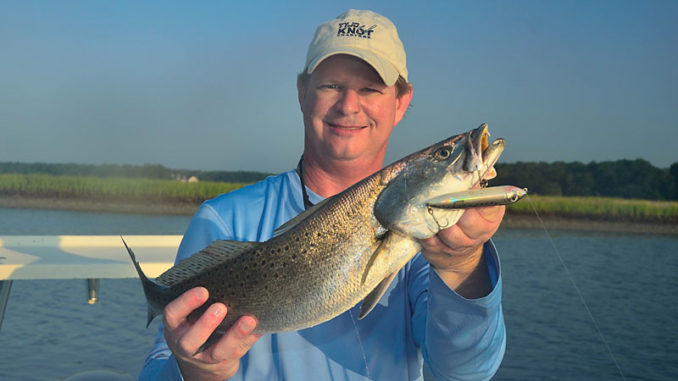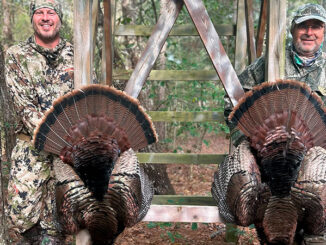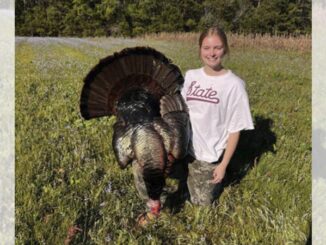
Winyah Bay water temperatures cool down this month
Fall arrives this month, and not soon enough. The heat of summer fades away, and cooler nights send water temperatures downwards. This refreshes the diehard anglers of summer. And speckled trout begin to feel good and put a smackdown on biggie-sized meals at the surface.
And the inshore jungles of South Carolina’s Winyah Bay are prime spots to get in on the action.
Two major populations of trout inhabit South Carolina’s inshore waters. One migrates south into South Carolina’s waters during the winter. The other group is considered resident fish. They remain local throughout the year, including the summer.
The migratory fish are still about a month away. But the local trout are becoming more active as the water starts to cool. The best time is also the coolest: early in the morning, just before dawn, before the ball of fire bullies its way into the Carolina sky.
Jordan Pate of Carolina Guide Service is a native of Georgetown County. And when he is not chasing tarpon or redfish, he patrols Winyah Bay for chunky specks.
Winyah Bay trout have a great habitat and plenty of baitfish
“Winyah Bay is rich with habitat and is chock full of baitfish this time of year,” said Pate (843-814-7900). “And the mullet are usually full grown this time of year. That gives trout a lot of reasons to get up early to eat.”
Speckled trout are one of Pate’s true passions. And he loves throwing topwater plugs in the fall.
“Trout are really keying in on larger baits because of all of the full-sized bait around,” he said. “They will hit a large topwater plug without thinking twice about it.”
Pate looks for the larger trout along shorelines, oyster points and any other structure near deep water.
“The trout will still keep deep water near them this time of year. But they will move into an ambush position early in the day at low light to feed,” he said.
Trout typically prefer current and prefer to be near a place where the current is broken by some sort of structure or change in the bottom. Baitfish get swept into these currents and come right to the lurking trout.
This area is full of such ambush points
The waters around Georgetown are littered with prime topwater habitat, from the base of the jetties all the way to the docks around Georgetown. Some of the best places are along shell banks on each side of the channel near the lighthouse and the marsh islands around Muddy Bay. These are many of Pate’s favorite places to find speckled trout throughout the year.
Pate uses a wide variety of topwaters, but he prefers an old reliable one, the Zara Spook. The noisy, walk-the-dog action of the bait rarely gets ignored by a fat, sow trout. Pate uses a wide variety of colors, but bone and/or chartreuse versions are some of his first choices.
“The sound and cadence usually get their attention. But the color doesn’t hurt either,” he said.
As the season begins to ramp up, it doesn’t take much encouragement for these fish to engulf a topwater lure in the right places. And the waters around Georgetown are tough to resist.





Be the first to comment